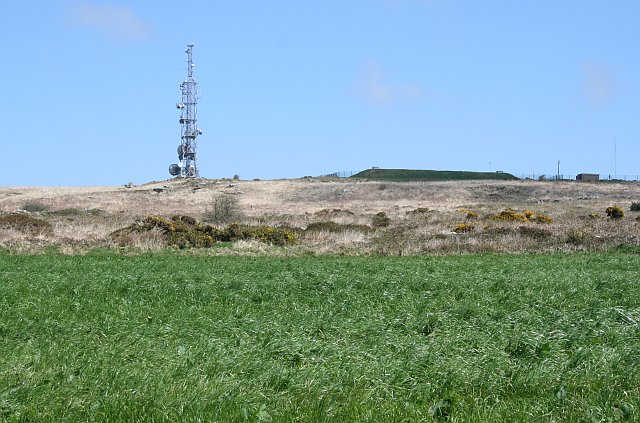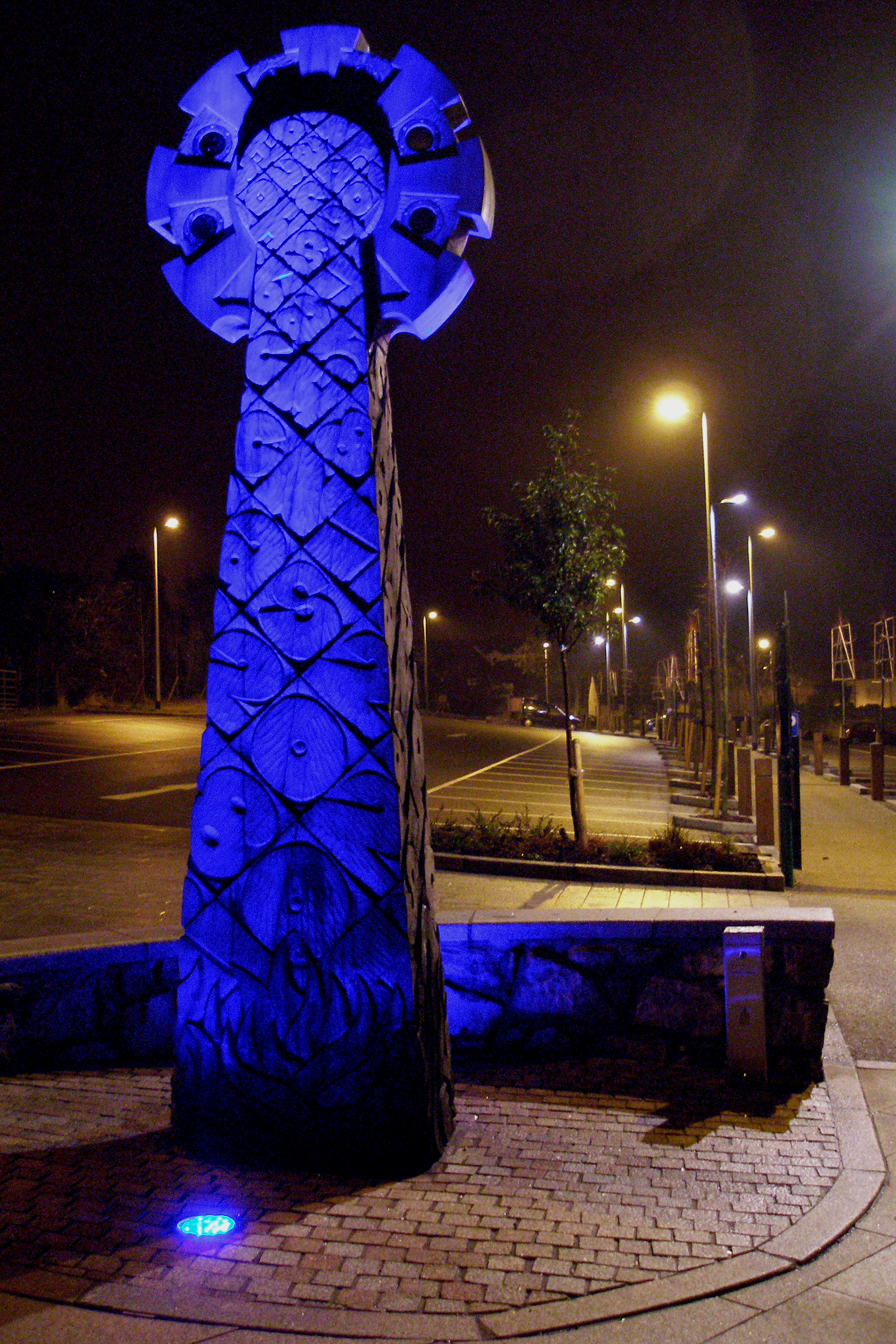|
Penmarth
Penmarth ( kw, Pollmargh) is a hamlet in Cornwall, England, United Kingdom, about west of Penryn and about south of Redruth. The hamlet is often referred to as Carnmenellis, which it was signposted as in the 1970s, and for centuries before the hamlet was known as Polmarth after the surrounding estate, from the Cornish language words ''poll'', meaning 'pool', and ''margh'', meaning 'horse'. The name Penmarth wasn't used until the Chapel was built. There is a picturesque caravan club site on the outskirts of the village called Penmarth caravans, complete with fresh water supplies and electrical hook ups. Chapel Penmarth has a Methodist chapel which was built in 1825. There is also a memorial located next to the chapel, which honours the names of eleven men from the area who died in both World Wars. Church In 1848 the foundation stone of a church for the Carnmenellis district was laid. Penmarth also had an Anglican Holy Trinity Church named Carnmenellis Church, which was bui ... [...More Info...] [...Related Items...] OR: [Wikipedia] [Google] [Baidu] |
Wendron
Wendron ( kw, Egloswendron (village), Pluw Wendron (parish); historically St. Wendron) is a village and civil parish in Cornwall, England, United Kingdom, to the north of Helston. The parish population at the 2011 census was 2,743. The electoral ward of Wendron had a 2011 population of 4,936. History The parish of Wendron was part of the Hundred of Kerrier and was originally bounded by the parishes of Illogan, Gwennap, Stithians, Constantine, Mawgan-in-Meneage, Gunwalloe, Sithney and Crowan. Until the mid 19th-century the parish of Wendron included the town of Helston and what are now the parishes of Carnmenellis and Pencoys. The parish of Carnmenellis was created in 1846; Helston in 1848; and Pencoys in 1881. Before 1284 Edmund, Earl of Cornwall, gave the church of Wendron, with its chapels, to Rewley Abbey near Oxford. Before this it had belonged to the Earl's, Manor of Helston, which included the whole parish. The church is cruciform but was enlarged in the 15th-century ... [...More Info...] [...Related Items...] OR: [Wikipedia] [Google] [Baidu] |
Carnmenellis
Carnmenellis Hill (or just Carnmenellis) gives its name to the area of west Cornwall in England, between Redruth, Helston and Penryn. The hill itself is situated approximately three miles (5 km) south of Redruth.Ordnance Survey: Landranger map sheet 203 ''Land's End'' It is one of five Marilyns in Cornwall; the others being Brown Willy (420 m), Kit Hill (334 m), Hensbarrow Beacon (312 m) and Watch Croft (252 m). The natural region of Carnmenellis has been designated as national character area 155 by Natural England. Penmarth, a nearby village, is sometimes referred to locally as Carnmenellis. The term 'Carnmenellis Granite' refers to the plateau In geology and physical geography, a plateau (; ; ), also called a high plain or a tableland, is an area of a highland consisting of flat terrain that is raised sharply above the surrounding area on at least one side. Often one or more sides ha ... of high ground in this area, one of five granite plutons in Cornwall that ... [...More Info...] [...Related Items...] OR: [Wikipedia] [Google] [Baidu] |
Cornwall
Cornwall (; kw, Kernow ) is a historic county and ceremonial county in South West England. It is recognised as one of the Celtic nations, and is the homeland of the Cornish people. Cornwall is bordered to the north and west by the Atlantic Ocean, to the south by the English Channel, and to the east by the county of Devon, with the River Tamar forming the border between them. Cornwall forms the westernmost part of the South West Peninsula of the island of Great Britain. The southwesternmost point is Land's End and the southernmost Lizard Point. Cornwall has a population of and an area of . The county has been administered since 2009 by the unitary authority, Cornwall Council. The ceremonial county of Cornwall also includes the Isles of Scilly, which are administered separately. The administrative centre of Cornwall is Truro, its only city. Cornwall was formerly a Brythonic kingdom and subsequently a royal duchy. It is the cultural and ethnic origin of the Cornish dias ... [...More Info...] [...Related Items...] OR: [Wikipedia] [Google] [Baidu] |
Penryn, Cornwall
Penryn (; kw, Pennrynn, meaning 'promontory') is a civil parish and town in west Cornwall, England, United Kingdom. It is on the Penryn River about northwest of Falmouth. The population was 7,166 in the 2001 census and had been reduced to 6,812 in the 2011 census, a drop of more than 300 people across the ten-year time gap. There are two electoral wards covering Penryn: 'Penryn East and Mylor' and 'Penryn West'. The total population of both wards in the 2011 census was 9,790. Though now the town is overshadowed by the larger nearby town of Falmouth, Penryn was once an important harbour in its own right, lading granite and tin to be shipped to other parts of the country and world during the medieval period. History Early history The ancient town first appears in the Domesday Book under the name of "Trelivel", and was since founded and named Penryn in 1216 by the Bishop of Exeter. The borough was enfranchised and its Charter of Incorporation was made in 1236. The content ... [...More Info...] [...Related Items...] OR: [Wikipedia] [Google] [Baidu] |
Redruth
Redruth ( , kw, Resrudh) is a town and civil parishes in Cornwall, civil parish in Cornwall, England. The population of Redruth was 14,018 at the 2011 census. In the same year the population of the Camborne-Redruth urban area, which also includes Carn Brea, Redruth, Carn Brea, Illogan and several satellite villages, stood at 55,400 making it the largest conurbation in Cornwall. Redruth lies approximately at the junction of the Great Britain road numbering scheme, A393 and A3047 roads, on the route of the old London to Land's End trunk road (now the A30 road, A30), and is approximately west of Truro, east of St Ives, Cornwall, St Ives, north east of Penzance, Cornwall, Penzance and north west of Falmouth, Cornwall, Falmouth. Camborne and Redruth together form the largest urban area in Cornwall and before local government reorganisation were an Urban district (Great Britain and Ireland), urban district. Toponymy The name Redruth derives from its older Cornish name, ''Rhy ... [...More Info...] [...Related Items...] OR: [Wikipedia] [Google] [Baidu] |
Cornish Language
Cornish (Standard Written Form: or ) , is a Southwestern Brittonic language, Southwestern Brittonic language of the Celtic language family. It is a List of revived languages, revived language, having become Extinct language, extinct as a living community language in Cornwall at the Last speaker of the Cornish language, end of the 18th century. However, knowledge of Cornish, including speaking ability to a certain extent, continued to be passed on within families and by individuals, and Cornish language revival, a revival began in the early 20th century. The language has a growing number of second language speakers, and a very small number of families now raise children to speak revived Cornish as a first language. Cornish is currently recognised under the European Charter for Regional or Minority Languages, and the language is often described as an important part of Cornish identity, culture and heritage. Along with Welsh language, Welsh and Breton language, Breton, Cornish is ... [...More Info...] [...Related Items...] OR: [Wikipedia] [Google] [Baidu] |
Sithney
Sithney ( kw, Merthersydhni) is a village and civil parish in West Cornwall, England, United Kingdom. Sithney is north of Porthleven. The population including Boscadjack and Crowntown at the 2011 census was 841. It is named after Saint Sithney, the patron saint of the parish church. Saint Sithney was one of the band of Irish missionaries who came to west Cornwall. William Worcester recorded in 1478 that the body of the saint lay within the church. History Church In 1230 the church belonged to the Antrenon family who attached to it a charge of 4 shillings yearly to the priory of St Germans. In 1267 it was appropriated to Glasney College; the last rector ceded his benefice to the college in 1270. The parish church is of Norman foundation but the present structure is more or less of the 15th century. The old Norman font of this church was removed to the new church of Carnmenellis (since demolished). A 13th-century coffin slab was brought to the church from St John's. In the church ... [...More Info...] [...Related Items...] OR: [Wikipedia] [Google] [Baidu] |
St Peter's Church, Vauxhall
St Peter's, Vauxhall, is a Church of England church on Kennington Lane, Vauxhall, London SE11. The church was planned in 1860 by John Loughborough Pearson, and built in 1863-4 together with schools, orphanage and vicarage, and is one only a few Grade II* listed buildings in the area. This was Pearson's first major town church. The interior is more attractive than the exterior would suggest. That is partly because the idea was that the spirituality of the interior would reveal itself on entry, but also because the planned-for statement tower never got built. The church cost only £8,000 to build, but is richly decorated inside. It has an amazingly complete set of fittings. Also, a rather splendid small organ by Lewis which packs a serious punch. There are concerts from time to time in the church, which has a very good acoustic. The St Peter's Singers sing evensong on the last Sunday of the month but not in summer and with adjustments on account of Easter and Advent/Christm ... [...More Info...] [...Related Items...] OR: [Wikipedia] [Google] [Baidu] |
Joan Rendell
Joan Rendell MBE (1921 – 4 May 2010) was an English historian, writer (mainly on Cornish subjects), and phillumenist. Life Rendell was born in Plymouth, Devon, in 1921. She was the daughter of Gervase Rendell, born 1879 in Eastry, Kent. For most of her life her home was at Werrington, Cornwall. She was the author of more than 30 books, mainly on Cornish subjects. In September 1980 she was made a Bard of Gorsedh Kernow, taking the name ''Scryfer Weryn'' (Writer of Werrington). She was also an avid collector of matchbox covers and had an estimated collection of 300,000. Another interest was corn dolly making, on which she also wrote a book. Rendell died in a fire at her bungalow in Yeolmbridge, near Launceston, Cornwall, on 4 May 2010. Awards Rendell was awarded the MBE in 1958, for raising £100,000 in National Savings stamps. She went on to be national chairman of the National Savings Bank. In 1977 she was awarded the Queen's Silver Jubilee Medal.Notes in ''Superstitio ... [...More Info...] [...Related Items...] OR: [Wikipedia] [Google] [Baidu] |






